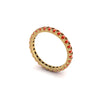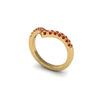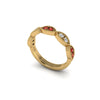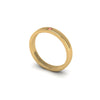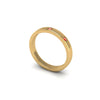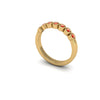"From Sparkle To Significance: Your Ultimate Diamond Guide!"
The most famous gem in the world is unsurprisingly, a Diamond – the Kohinoor. Diamonds have been valued for millennia for their transparency and brilliance. Scoring a perfect 10 on the Mohs scale, Diamond is the hardest mineral on earth – and so often considered a symbol of invincibility and endurance.
Diamonds can be naturally mined from places like South Africa or India, or created in the lab. Naturally mined Diamonds are found in a volcanic mineral called Kimberlite, which is formed deep underground at very high pressure. They can occasionally have small impurities when observed under a microscope, which gives them their uniqueness and personality. Lab-grown Diamonds are created under high pressure and temperature in laboratories from pure carbon. If renewable solar energy is used to power the process, such Diamonds are called Solar Diamonds – and they have the lowest carbon footprint. Physically and chemically, natural and grown Diamonds are identical, being made of crystalline carbon, and give the same lustre.
Unfortunately, the high value placed on mined Diamonds have often led to conflict and unethical practices. At AUWL Assembly, we only use naturally mined Diamonds procured through the Kimberley Process Certification Scheme (KPCS), that globally ensures that Diamonds are ethically sourced and conflict-free.
Diamonds are valued based on the 4Cs – Color, Clarity, Cut and Carat. A diamond's value is greatly influenced by the rarity of one or more of these 4Cs. For example, colorless diamonds are rare, as most diamonds naturally have subtle tints of yellow or brown. The value of a finished, polished diamond is determined by this combination:
-
Cut: We think of the shape of the Diamond (round, oval, cushion, emerald, princess, pear, trillion, etc) when we think of its cut. However, what jewelers think of as ‘cut’ refers to a Diamond’s faceting. In a well-cut Diamond, light interacts with the facets and crown through reflection, refraction, and diffusion, creating its signature sparkle. Skilled Diamond-cutters aim for perfect symmetry for maximum sparkle, in a way no other gems can. The cut of a Diamond is further measured by three factors:
-
Brightness: The amount of white light that a Diamond reflects.
-
Fire: How a Diamond scatters white light into a spectrum of colors.
-
Scintillation: The combination of light and dark areas that create a Diamond’s sparkle.
-
Color: By color, jewelers refer to how transparent a Diamond is. The Gemological Institute of America (GIA) grades color on a letter scale from D to Z, where D represents a completely colorless Diamond with the highest grade. Z indicates a noticeable tinge of light yellow to brown shades. This grading is done by special tools and reflects in the price – even though the difference may not be evident to the naked eye.
GIA Color Scale
| Colorless (D–F) | Near Colorless (G–J) | Faint Color (K–M) | Very Light Color (N–R) | Light Color (S–Z) |
-
Clarity: A naturally formed Diamond will have imperfections, though these are rare. Most Diamonds are ‘eye-clean’, that is any inclusions or blemishes they have may be visible only under a microscope. Jewelers use the GIA clarity scale to determine the quality of a Diamond (and hence its value), with Flawless Diamonds being the most preferred (and valued) – with no inclusions or blemishes detected even at 10-fold magnification.
GIA Clarity Scale
| Grade | Description | Inclusions |
|---|---|---|
| FL | Flawless | No inclusions or blemishes |
| IF | Internally Flawless | No inclusions |
| VVS1, VVS2 | Very Very Slightly Included | Very small inclusions, difficult even for a professional to see |
| VS1, VS2 | Very Slightly Included | Minor inclusions seen under 10x magnification |
| SI1, SI2 | Slightly Included | Noticeable inclusions seen under 10x magnification |
| I1, I2, I3 | Included | Prominent inclusions seen under 10x magnification |
-
Carat: This is a measure of how much a Diamond weighs – which determines its price. For two Diamonds of similar cut, clarity, and color, the one with more carats can be priced disproportionately and dramatically higher. One metric carat (ct) is defined as 200 milligrams. Each carat is divided into 100 points, or 2 milligrams. An 83-pointer would be a Diamond that weights 0.83 carats, or 166 milligrams.
While karats in gold refer to its purity, the carat of a Diamond refers solely to its weight. Purity is measured by color and clarity, instead.

